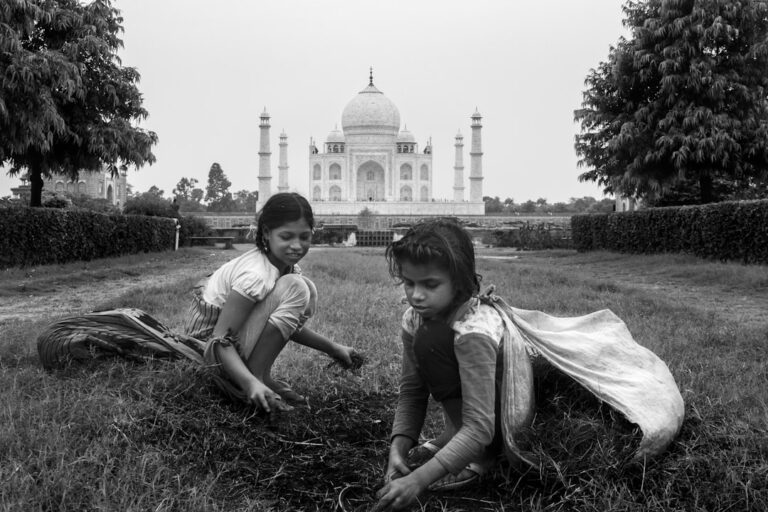The early life of many poets often serves as a crucible for their later works, and this is particularly true for the prominent figures of the Romantic era. Born in the late 18th century, these poets were shaped by the tumultuous socio-political landscape of their time, which included the aftermath of the French Revolution and the rise of industrialization.
The natural beauty of his surroundings profoundly influenced his poetry, instilling in him a deep appreciation for nature that would become a hallmark of his work. His early experiences, including the loss of his mother at a young age and his subsequent education in various schools, contributed to his introspective nature and his desire to explore human emotions through verse. Similarly, Samuel Taylor Coleridge, another titan of Romantic poetry, was born in 1772 in Devonshire.
His upbringing was marked by a love for literature and a fascination with the supernatural, which would later manifest in his poetry. Coleridge’s early exposure to the works of Shakespeare and Milton ignited his passion for language and storytelling. His struggles with mental health and addiction also played a significant role in shaping his artistic voice, leading him to explore themes of imagination and the sublime in his poetry.
The interplay between their personal experiences and the broader cultural movements of their time laid the groundwork for their literary careers, allowing them to articulate the complexities of human emotion and the beauty of the natural world.
Key Takeaways
- William Wordsworth’s early life was marked by the loss of his parents and a deep connection to nature, which greatly influenced his literary works.
- His literary themes often revolved around nature, the beauty of the natural world, and the spiritual connection between humans and nature.
- Wordsworth’s major works include “Lyrical Ballads” and “The Prelude,” which are considered to be some of the most important works in English literature.
- His friendship and influence on fellow poet Samuel Taylor Coleridge led to the creation of “Lyrical Ballads” and the development of the Romantic movement.
- Wordsworth’s legacy and impact on Romanticism can be seen in his emphasis on the individual, nature, and the power of imagination, which greatly influenced future generations of poets.
- In comparison to other Romantic poets, Wordsworth’s focus on nature and the ordinary lives of people set him apart and solidified his place as a leading figure in the Romantic movement.
Literary Themes and Styles
The literary themes and styles that emerged during the Romantic period were revolutionary, breaking away from the constraints of neoclassicism and embracing individualism, emotion, and nature. Wordsworth’s poetry often reflects a profound connection to nature, emphasizing the idea that the natural world is a source of inspiration and spiritual renewal.
” In this poem, Wordsworth meditates on memory and the passage of time, illustrating how nature can evoke deep emotional responses and foster a sense of continuity between past and present.
Coleridge’s style, on the other hand, is characterized by its rich imagery and exploration of the supernatural. His famous poem “The Rime of the Ancient Mariner” exemplifies this approach, weaving together elements of folklore, myth, and moral allegory. Coleridge’s fascination with dreams and the unconscious mind led him to experiment with form and structure, often employing irregular meter and vivid imagery to create an immersive experience for readers.
The interplay between reality and imagination is a recurring theme in his work, inviting readers to explore the boundaries between the tangible world and the realms of fantasy.
Major Works and Contributions

The contributions of Wordsworth and Coleridge to English literature are monumental, with their major works continuing to resonate with readers today. Wordsworth’s “Lyrical Ballads,” co-authored with Coleridge in 1798, is often regarded as a seminal text in the Romantic movement. This collection not only introduced new poetic forms but also championed the use of common language to express profound ideas.
The poem “I Wandered Lonely as a Cloud,” commonly known as “Daffodils,” encapsulates Wordsworth’s belief in the restorative power of nature. Through vivid imagery and emotional depth, he captures a moment of transcendence that speaks to universal human experiences. Coleridge’s contributions are equally significant, particularly through his exploration of imagination and creativity.
His poem “Kubla Khan,” written after an opium-induced dream, showcases his ability to conjure fantastical landscapes and evoke strong emotions through language. The poem’s dreamlike quality reflects Coleridge’s belief in the power of imagination as a means of accessing deeper truths about existence. Additionally, his critical essays on poetry and philosophy helped shape literary theory during his time, influencing future generations of writers and thinkers.
Friendship and Influence on Each Other
The friendship between Wordsworth and Coleridge was not only personal but also profoundly influential on their respective works. Their collaboration on “Lyrical Ballads” marked a turning point in English poetry, as they sought to redefine poetic expression by emphasizing emotion over reason. Wordsworth’s belief in the importance of nature as a source of inspiration resonated with Coleridge, who found solace in the natural world despite his struggles with mental health.
Their discussions on poetry, philosophy, and politics fostered an environment where both poets could explore new ideas and challenge conventional norms. However, their friendship was not without its challenges. As their careers progressed, differences in their artistic visions began to emerge.
Wordsworth’s focus on nature and rural life contrasted with Coleridge’s fascination with the supernatural and philosophical inquiry. Despite these divergences, their mutual respect for each other’s talents remained intact. Coleridge often praised Wordsworth’s ability to capture profound emotions through simple language, while Wordsworth admired Coleridge’s imaginative prowess.
This dynamic interplay between their differing styles enriched their poetry and contributed to the broader Romantic movement.
Legacy and Impact on Romanticism
The legacy of Wordsworth and Coleridge extends far beyond their individual works; they played pivotal roles in shaping the Romantic movement as a whole. Their emphasis on emotion, individual experience, and a deep connection to nature laid the groundwork for future generations of poets. The ideals they championed—such as the importance of personal expression and the celebration of the natural world—resonated with later Romantic figures like John Keats and Percy Bysshe Shelley.
Their influence can be seen in the way subsequent poets embraced themes of introspection, imagination, and a rejection of societal norms. Moreover, their contributions to literary criticism helped establish new standards for evaluating poetry. Coleridge’s analytical approach to understanding poetic form and function encouraged writers to consider not only what was being said but how it was being expressed.
This shift in focus paved the way for more experimental forms of poetry that emerged in the 19th century. The Romantic movement itself became a catalyst for broader cultural changes, influencing art, philosophy, and politics throughout Europe.
Comparison with Other Romantic Poets

When comparing Wordsworth and Coleridge with other Romantic poets such as Lord Byron or John Keats, distinct differences in style and thematic focus emerge. Byron’s work often embodies a sense of rebellion against societal norms, characterized by his brooding anti-hero archetype. In contrast to Wordsworth’s pastoral themes or Coleridge’s supernatural explorations, Byron’s poetry frequently delves into themes of love, loss, and existential angst.
His narrative style is marked by wit and irony, creating a different emotional landscape than that found in Wordsworth’s more serene reflections on nature. John Keats presents another fascinating comparison; his poetry is imbued with sensual imagery and an acute awareness of mortality. While Wordsworth emphasizes nature as a source of solace and inspiration, Keats often grapples with beauty’s ephemeral nature.
In poems like “Ode to a Nightingale,” Keats explores themes of transience and longing, contrasting sharply with Wordsworth’s more optimistic view of nature’s permanence as a source of joy. Both poets share an appreciation for beauty but approach it from different angles—Wordsworth through a lens of tranquility and connection to nature, while Keats embraces beauty’s fleeting moments as both a source of inspiration and sorrow. In summary, while Wordsworth and Coleridge laid foundational stones for Romanticism through their unique styles and themes centered around nature and imagination, other poets like Byron and Keats expanded upon these ideas by introducing new perspectives on love, beauty, and existential inquiry.
Each poet contributed to a rich tapestry that defines Romantic literature today, showcasing the diversity within this transformative literary movement.
If you are interested in exploring the concept of equality and social justice, you may want to check out this article on education inequalities and social justice. Just like how Romantic poets like Wordsworth, Shelley, and Keats used their poetry to advocate for social change and equality, this article delves into the importance of providing equal educational opportunities for all individuals regardless of their background. It is a thought-provoking read that sheds light on the ongoing issues surrounding education disparities and the need for social reform.






















+ There are no comments
Add yours